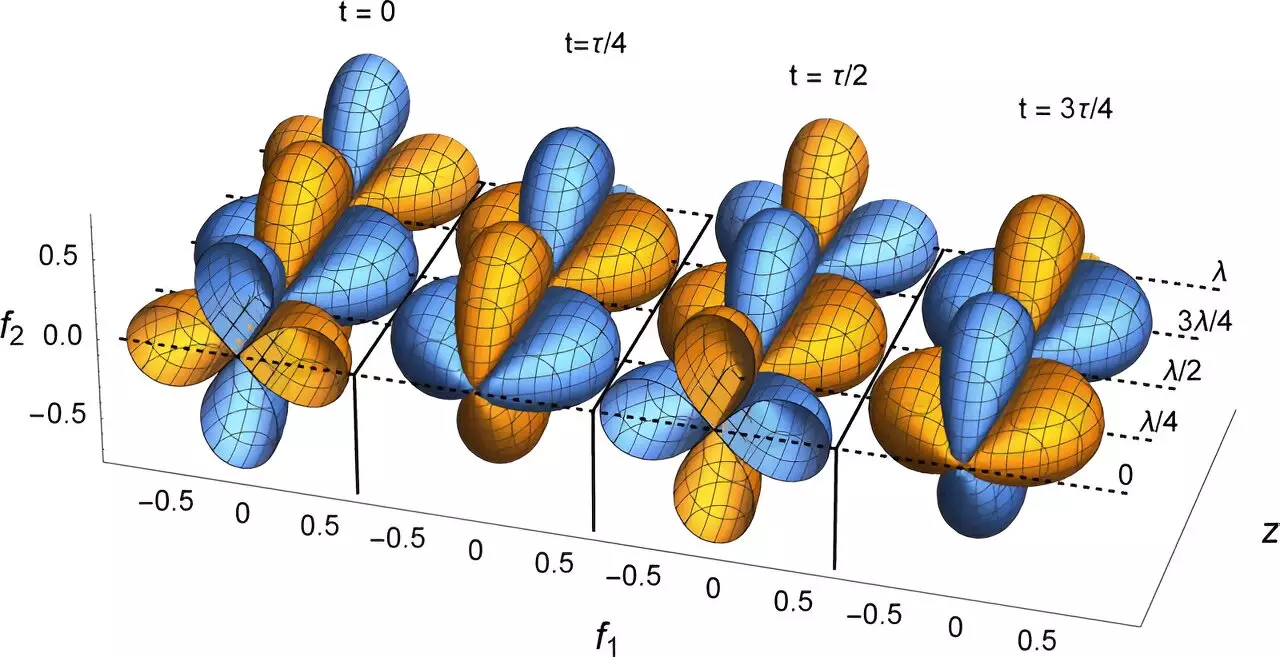The detection of gravitational waves, as predicted by Einstein in 1916, revolutionized our understanding of space and time. It was not until September 2015 that the Laser Interferometer Gravitational-Wave Observatory (LIGO) telescope confirmed the existence of these elusive waves. These waves, which occur when two black holes collide, are incredibly challenging to observe due to the minuscule changes in length that need to be detected. Despite the monumental engineering achievements of telescopes like LIGO, detecting gravitational waves remains a difficult task.
Researchers from the Okinawa Institute for Science and Technology (OIST), the University of Tohoku, and the University of Tokyo have proposed an innovative method for simulating gravitational waves in the laboratory. By utilizing a quantum condensate of cold atoms, the scientists have found a way to mimic the propagation of gravitational waves on a much smaller scale. Published in the journal Physical Review B, their research has opened up new possibilities for studying these elusive phenomena in a controlled experimental setting.
The team focused on the properties of Bose-Einstein Condensate (BEC), a state in which quantum particles act cohesively. Specifically, they studied a type of BEC known as spin nematics, which exhibit wave-like behavior similar to gravitational waves. These waves, which carry energy across the system, are mathematically identical to gravitational waves, providing a unique opportunity to simulate and study these phenomena in the laboratory. This groundbreaking research could offer valuable insights into the nature of gravitational waves and their implications for our understanding of the universe.
Professor Nic Shannon, the senior author of the study, emphasizes the importance of this discovery in bridging the gap between theoretical predictions and experimental observations. By leveraging the properties of spin nematics in a quantum condensate, researchers can investigate gravitational waves in a much simpler and controlled environment. This novel approach not only offers a new avenue for studying gravitational waves but also highlights the interconnectedness of different physical phenomena through underlying mathematical structures.
Dr. Leilee Chojnacki, the lead author of the study, reflects on the beauty of physics in uncovering the similarities between seemingly disparate phenomena. The ability to describe complex systems using universal mathematical principles is a testament to the elegance and unity of the universe. This research not only advances our understanding of gravitational waves but also showcases the intrinsic connections between different branches of physics.
The simulation of gravitational waves in the laboratory through a quantum condensate of cold atoms represents a significant breakthrough in the field of quantum physics. By exploiting the similarities between spin nematics and gravitational waves, researchers have paved the way for new discoveries and insights into the fundamental nature of the universe. This interdisciplinary research underscores the power of theoretical modeling and experimental validation in pushing the boundaries of scientific knowledge.


Leave a Reply